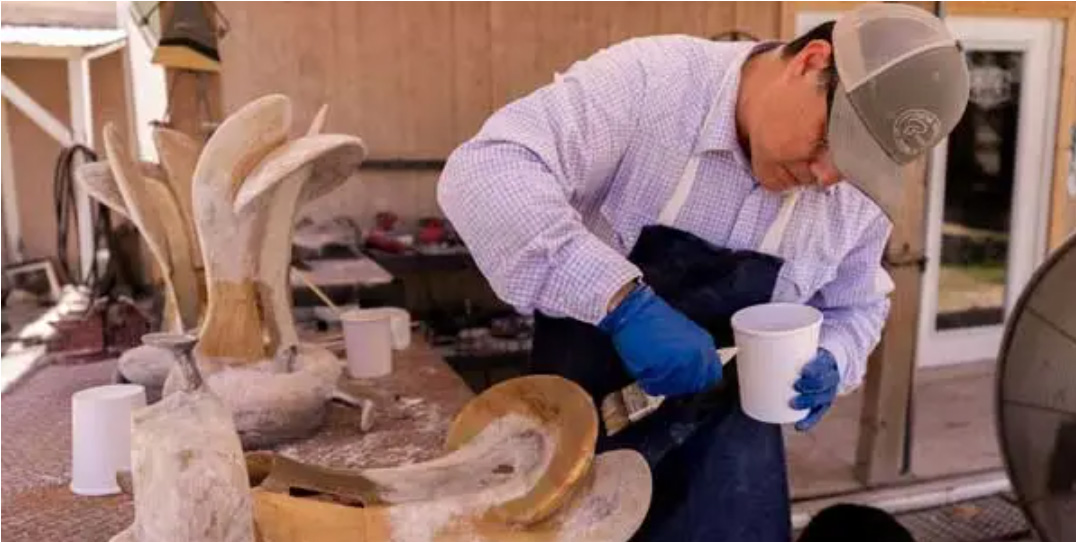
by Nick Pernokas
Brandit Franco grew up in the heart of Florida’s cowboy country. The family business was starting colts and training ranch horses. Brandit’s father, Sam Franco, took a lot of horses to ride that weren’t making it in someone else’s training program. Sam trained everything from Quarter Horses to wild Mustangs in the Seventies and Eighties. Brandit grew up working cows in southern Florida, around Okeechobee and Kissimmee, which is a different type of cowboying then most people visualize in the American West.
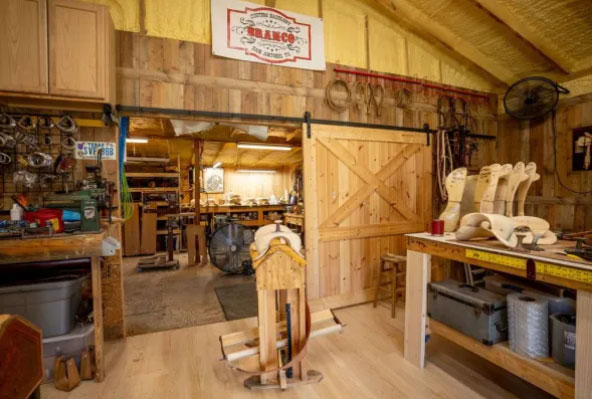 />
/>
“I was born into it,” remembers a 47-year-old Brandit. “I cut my teeth dragging cattle out of the swamps.”
A lot of Brandit’s youth was spent in north central Florida. Sam was an ex-military man though and he was a wanderer. He trained horses all of his life, but he would move from one horse training job to another.
“He followed where his heart told him the horse business was,” says Brandit.
Brandit helped his dad with the horses and learned to ride and break them. Like many cowboys, Sam knew how to fix a saddle and tack when it was necessary.
“We weren’t rich folks by any means so we had to do our own leatherwork.”
Brandit’s first job in leatherwork was setting rivets for his dad. Brandit eventually built a few saddles with Sam, but they were pretty plain, working saddles.
The Franco family moved from Florida to the Mineral Wells, Texas area in the mid Eighties. They were only there for a few years, but Sam was friends with famed all-around cowboy Ed Workman. Ed trained horses at his indoor arena just outside of town and Brandit was able to learn how to rope calves from him. But, Brandit’s first love was competing in the saddle bronc and bareback bronc riding events and the roping never replaced that.
Brandit’s family moved to New Mexico in 1993, which was his final year in high school. As a senior, he rode bareback broncs at the high school rodeos, but a back injury forced him to hang up his rigging for good after that. After that, Brandit’s bronc riding was limited to the horse training kind.
“My dad said that if I wanted to ride broncs, I didn’t have to do it for a buckle. He had plenty for me to ride right at the house.”
In 1994, the family made their final move to San Antonio, Texas. Sam kept training outside horses and he also had a small leather repair shop.
Brandit bought his own trucking business, but as he got older he was drawn back to his roots. Around 2010, Brandit began to think about retiring from the trucking business and getting back into the leather world. He started combing the internet for instructional videos. He found a lot of information to build on. He began to follow Don Gonzales and became fascinated with leather tooling. Brandit’s tooling began as a hobby, but the more he did, the more serious he became.
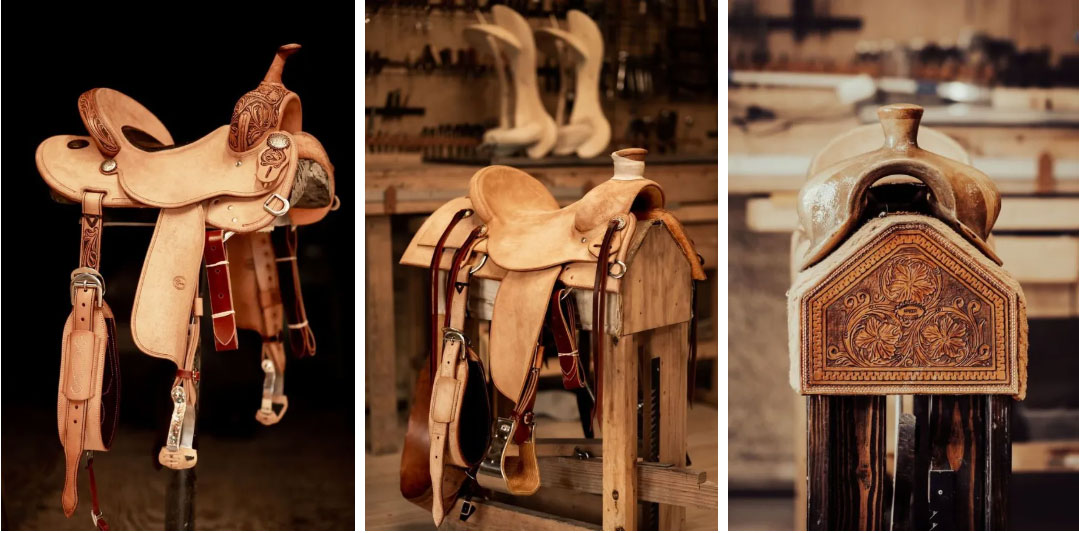
“Things just kind of snowballed from there.”
Finally, Brandit built a saddle for himself. When he posted a picture of it online, someone wanted to buy it. Brandit never got to ride the saddle, but his saddle business was launched. Brandit was self-taught, generally building on what he learned from his dad.
Brandit gave himself a seven-year plan to retire from trucking to develop his saddle business. He combined Brandit with Franco and named his new business, Branco Custom Saddlery. Facebook was Brandit’s best tool for growing his business dramatically.
“I pretty much built the whole saddle business off of social media,” says Brandit.
Brandit invested in many drawing and tooling classes in order to raise the level of his work.
“Then I started associating myself with peers in the industry that I looked up to. Guys like Terry Henson and Adam Tanner, and some of the guys out west. I started following those guys and befriended a lot of them.”
Adam Tanner and Brandit have become good friends and Adam has become a mentor to Brandit with his tooling. Adam even comes down to Brandit’s shop to help out once in a while.
“It’s become a friendship of such that we help each other out quite regularly.”
Ironically, Brandit’s initial success was in the mule world. Mule’s backs generally have a more consistent angle from front to rear then a horse does. The bars of the saddle trees do not need to have as much “twist.” The bars are also flatter in the “rock.” Brandit designed a bar that fit an average mule very well and he noticed that saddles built for mules didn’t have a “cowboy” look to them. He decided to remedy that by getting a mule fit in his saddle trees, but pursuing a cooler western style in the construction.
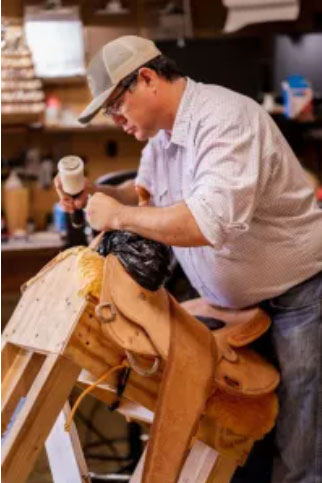
“We are all artists to some degree in this business. If you want to be successful, you have to have a saddle that is pleasing to look at, not just functional.”
Brandit began setting up at trade shows, such as The Western Heritage Classic in Abilene, Texas, and some select horse auctions.
“I grew up in the buying and selling horse business, so I went with what I knew, which was horse auctions.”
Some of the horse sales last several days with thousands of horse people walking past a booth. Brandit found that this was really good exposure to potential customers. Many of the older horsemen weren’t tech savvy, and Brandit would have missed them if he hadn’t gone to where they were.
Covid provided a “good” financial jolt to Brandit’s business and he was the busiest that he’d ever been. He dropped some of the trade shows that he attended because he didn’t have time to build up his inventory for them. The saddle business has become so strong now for Brandit that he only does smaller items, like belts and wallets, if they are requested. He has primarily made saddles for working cowboys, but his tooling is starting to attract business from arena cowboys.
Around 2020, Brandit was approached to teach saddlemaking. The traditional method of apprenticing with a saddlemaker had declined as the large shops grew smaller. Potential saddlemakers didn’t have the luxury of time to pick up knowledge piecemeal. Brandit developed a program that taught the fundamentals of saddlemaking. The 15-day class was aimed at students who wanted to pursue saddlemaking as a vocation. The school covered fit on horses and involved a lot of picture and notetaking during the saddlemaking process.
“I wanted these guys to be able to document every aspect of the build. That way, when they get back to their shops, they can go back and refer to all of these processes.”
During the class, Brandit builds another saddle alongside the student’s saddle, but he will step in and correct their work if they run into a problem.
“When they complete their first saddle with me, I want them to see that they are capable of doing the work at the highest level.”
Brandit feels that the biggest weakness in his students is that they haven’t developed their eye for lines yet.
As Brandit’s saddle business picked up, he found that he was having trouble getting saddle trees in a timely manner. He decided to start building his own trees using parts that were cut to his specifications by a saddle tree company. Tree maker Francis Bowden gave Brandit some tips on construction as well as a jig. Today, Brandit assembles the trees himself using the jig and a laser. They are then covered in two-ply fiberglass. Brandit paints fiberglass resin on the wood and then lays in a piece of fiberglass cloth. He repeats these steps until he gets the desired lamination for that part of the tree. Generally, Brandit uses an 8 ½ or 10-ounce cloth on some components, and a 12-ounce cloth on others. The bottoms of the bars are covered with two layers of 8 ½, while the top is covered with combinations of 8 ½ and 12. The combination of two layers provides the strength. The strainer seat is also integrated into the fiberglass, which creates even more strength. The response was so positive that Brandit realized there was a profitable opportunity to provide saddle trees to other saddlemakers. In 2021, Brandit took on a partner, Brady Bennett, in the tree business and ordered a couple of CNC machines. Brandit’s South Texas Saddle Trees stand out because he likes to add a little shape to the front of the gullet, like some of the old Visalia swells were made years ago. He can now keep his wait time on saddles down to six months because he can build his own saddle trees for them.
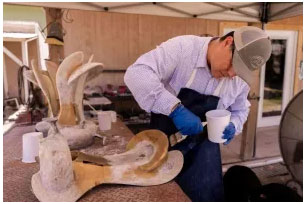
Brandit’s 1000-square-foot shop is on four acres west of San Antonio. There are also horse facilities here, though these days Brandit only rides for fun or to help a friend move cattle. The back half of the shop houses the machinery, while the front is the studio where Brandit builds his saddles. A shop dog named Dally keeps him company as he works by himself.
Brandit’s base price for saddles is $4250. He tries to keep his prices as affordable as he can for the everyday working cowboy.
To find out more about any of Brandit Franco’s endeavors, call 210-249-1403 or go to brancocustomsaddlery.com.
Branco Custom Saddlery, 1875 Grosenbacher Rd. , San Antonio, TX 78245
This article originally appeared on Shop Talk Magazine and is published here with permission. All photos and courtesy of Shop Talk Magazine.
There are lots of good articles in our section on Tack & Farm.
































